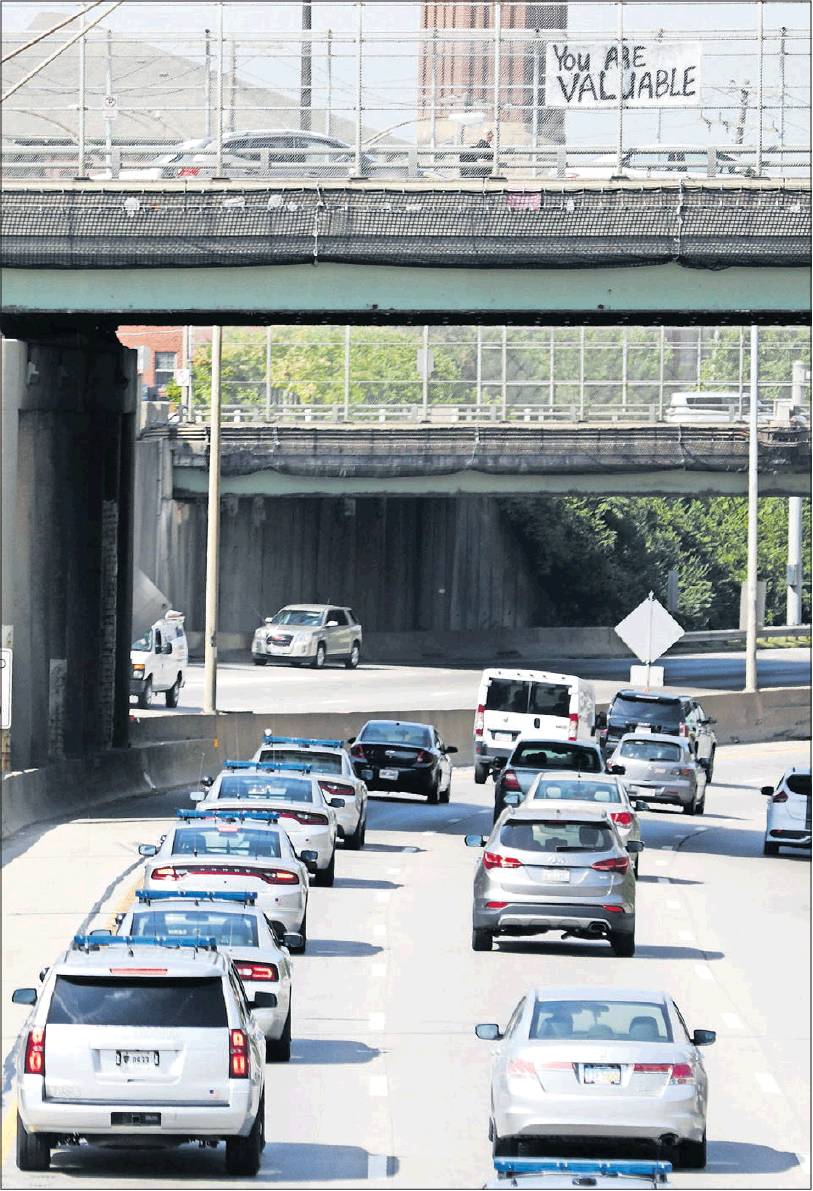‘Hold On Pain Ends’
Signs on Columbus overpasses, bridges help people know that they, too, are worthy
By Andy DowningColumbus Alive
This past week, local commuters might have spotted signs painted with inspiring phrases hung on highway overpasses, the messages reminding passersby that “you are valuable” and “you are worthy.”
The signs are the work of Cecily King, her teenage children and a friend of King’s daughter, whose HOPE tattoo served as the inspiration for a banner hung on a commuter bridge near Ohio State University RPAC and Wilce Student Health Center, where it could be spotted by those who might need the reminder: “Hold On Pain Ends.”
King, with her small crew, painted the slogans on bed sheets, re-purposed banners and plastic tarps before hanging them in easily visible locales using zip ties. “If you can, you’re picking what world you want to live in. I have depression and anxiety, like everyone else does, and I can let that dictate what I do. Or I can let that dictate what I do in a different way by asking, ‘What makes me feel better?’ And then doing that,” King said.
King, a Seattle native, provided free lunches for the homeless once a week for a year in college. In recent times, she’s run a free water stand at Columbus Pride, passing out almost 1,500 bottles this year, and provided what she termed “artist snacks,” asking poets, painters and others to provide a link to a payment app and then sending them a amount of money to purchase a treat, usually around $5. On occasion she’s also helmed a “compliment booth” on High Street, inviting pedestrians to accept some form of modest praise.
“Sometimes it’s sad to me that it’s not normal for someone to be nice to you. It should be normal,” King said. “I’m not Oprah. I’m not buying someone a car. ... Small things are what I have to offer.”
OSU Professor Darcy Haag Granello, who founded and still runs the university’s suicide prevention program, said the students are talking about the signs and there’s been positive social-media buzz over it. That’s a good thing, she said.
“Positive messages certainly can’t hurt,” Granello said Monday while on her way to a dissertation about that very topic. “When people are at their lowest, one positive phrase can make all the difference.”
She said research shows that the idea of relationships and feeling connected is so important in the world of mental-health and suicide prevention.
“A sign that says ‘you matter’ can make a person feel included ... can say we care about you and we want you in our community,” Granello said.
Some have questioned whether the signs, though worthwhile, are legal.
Debbie Briner, community relations coordinator for the Columbus Department of Public Service, said it comes down to safety.
“With possible First Amendment issues involved, the Department of Public Service generally doesn’t enforce removal of signs like these from the right-of-way unless they create safety issues,” Briner wrote in an email. “If we enforced removal of the specific signs you’ve asked about, then we would have to do the same, for example, for American flags hanging in the right of way on an overpass. We can’t selectively enforce based on a sign’s content.”
King brainstormed the slogans with her children, the team considering the many negative messages life can transmit throughout the day, and then trying to hit on words and phrases with which to counter them.
“That’s why we say, ‘You are valuable,’” King said. “So many people feel like they are not. I think we’re all looking for signs that things are going to be OK.”
Dispatch reporter Holly Zachariah contributed to this report.

